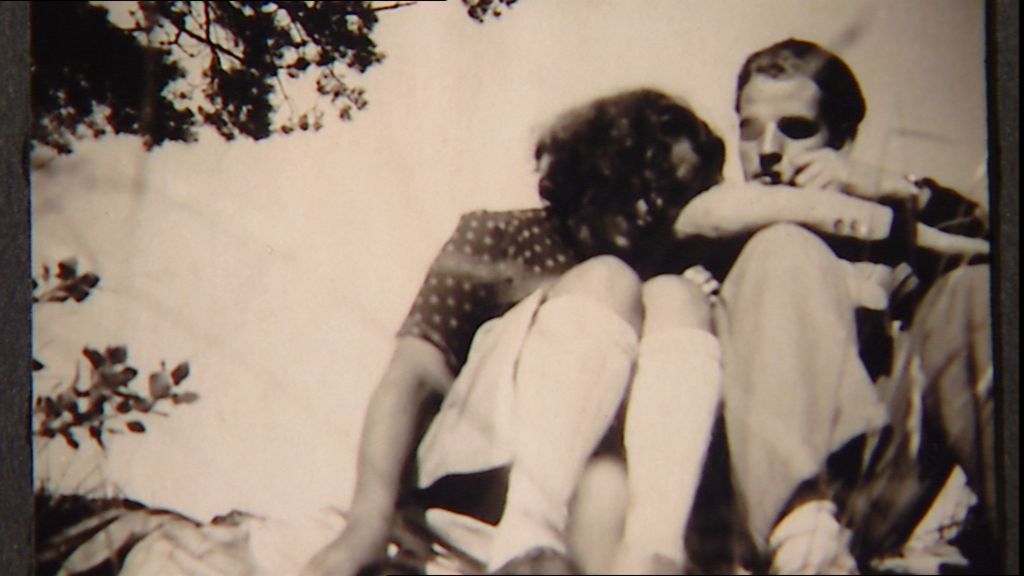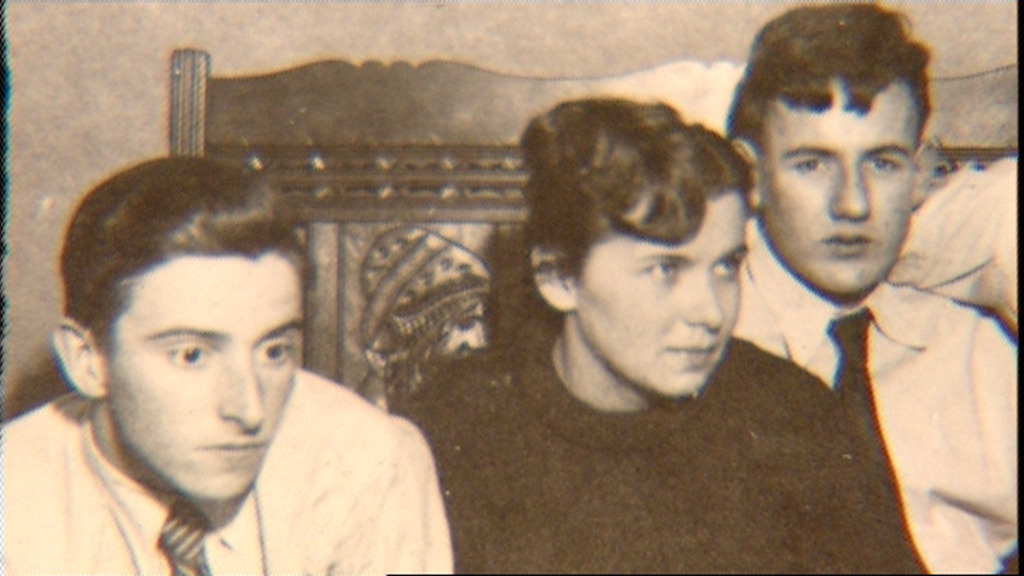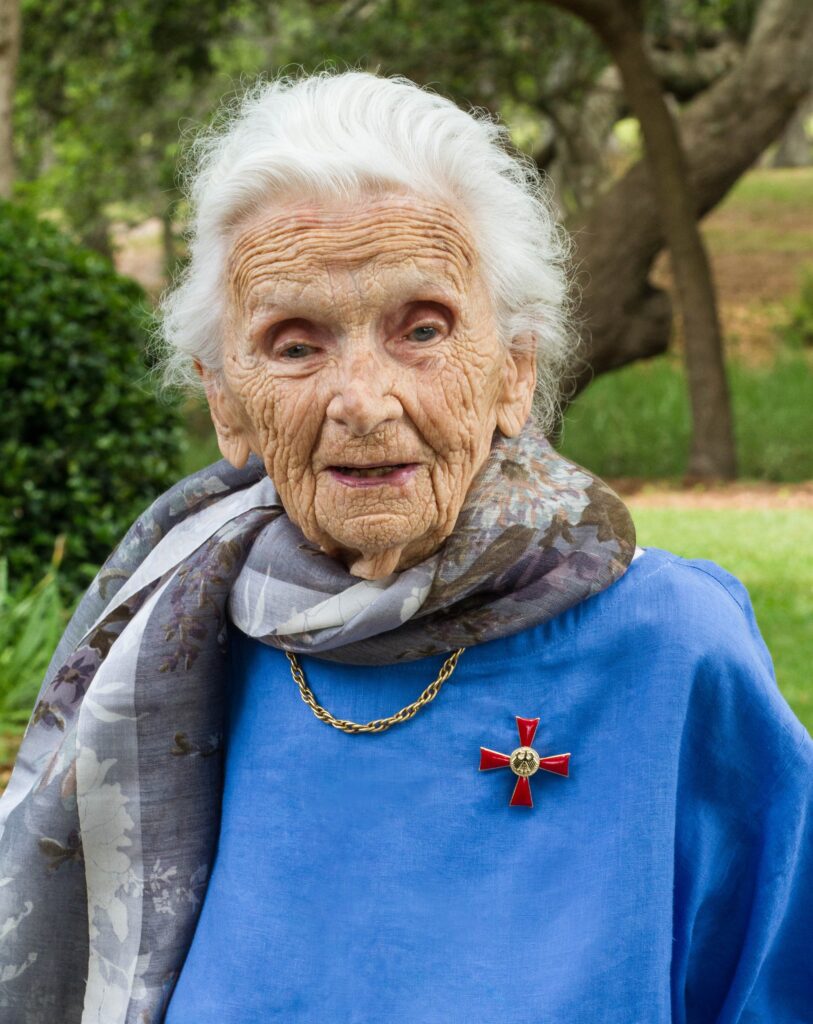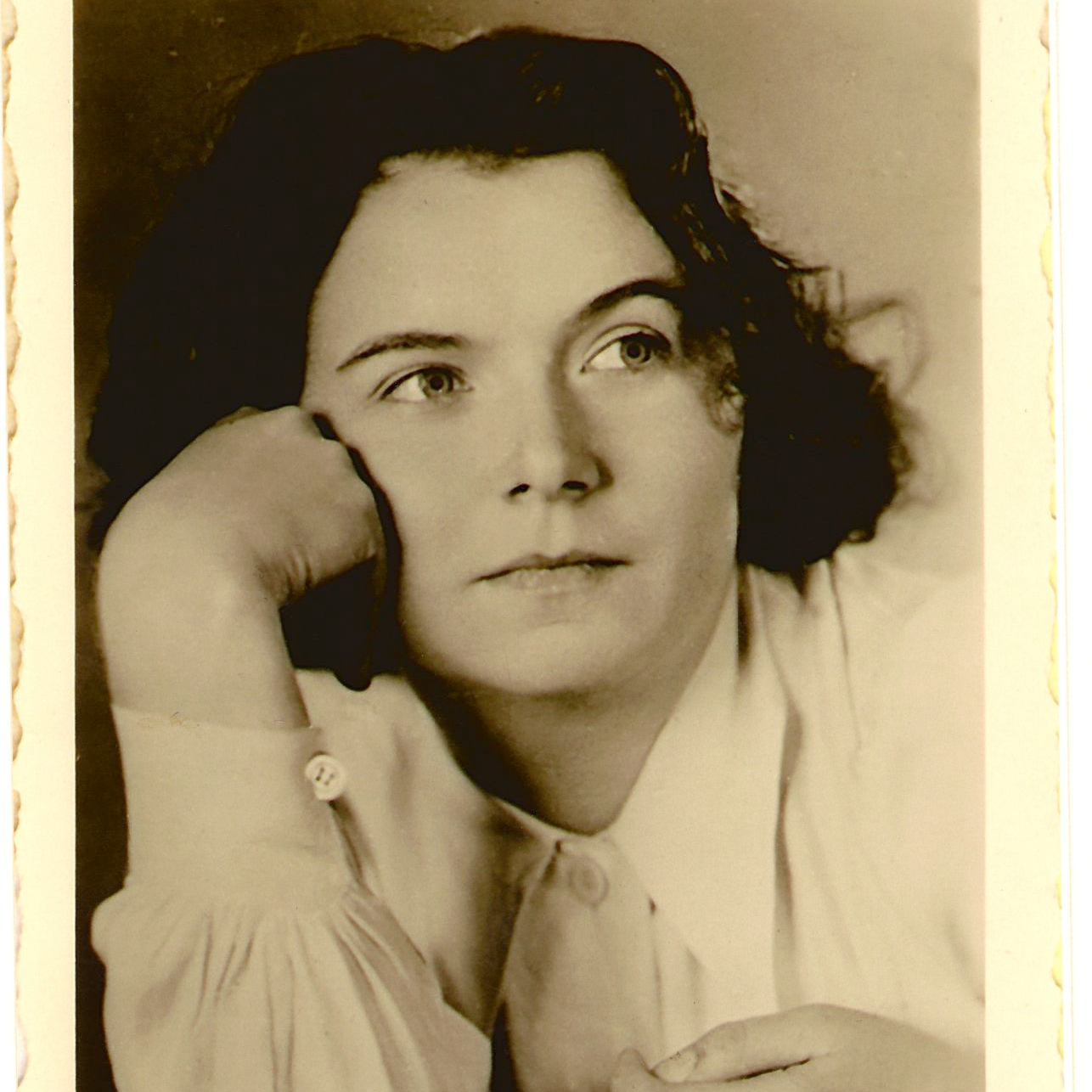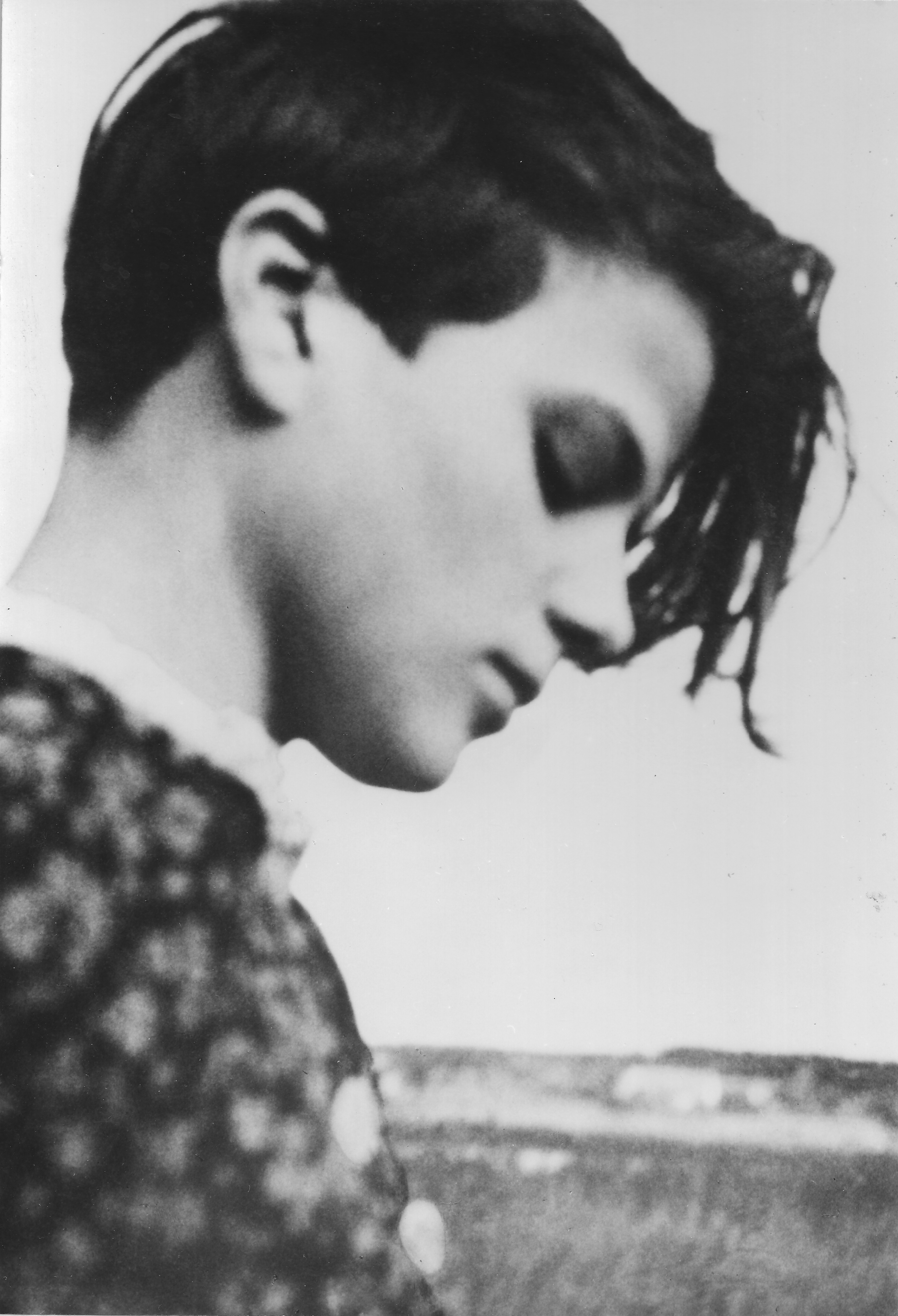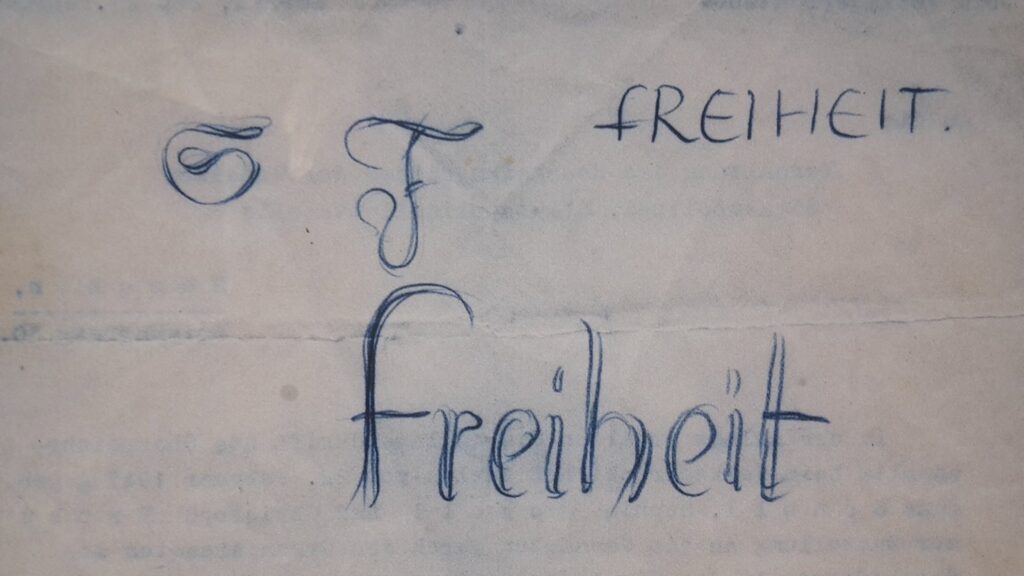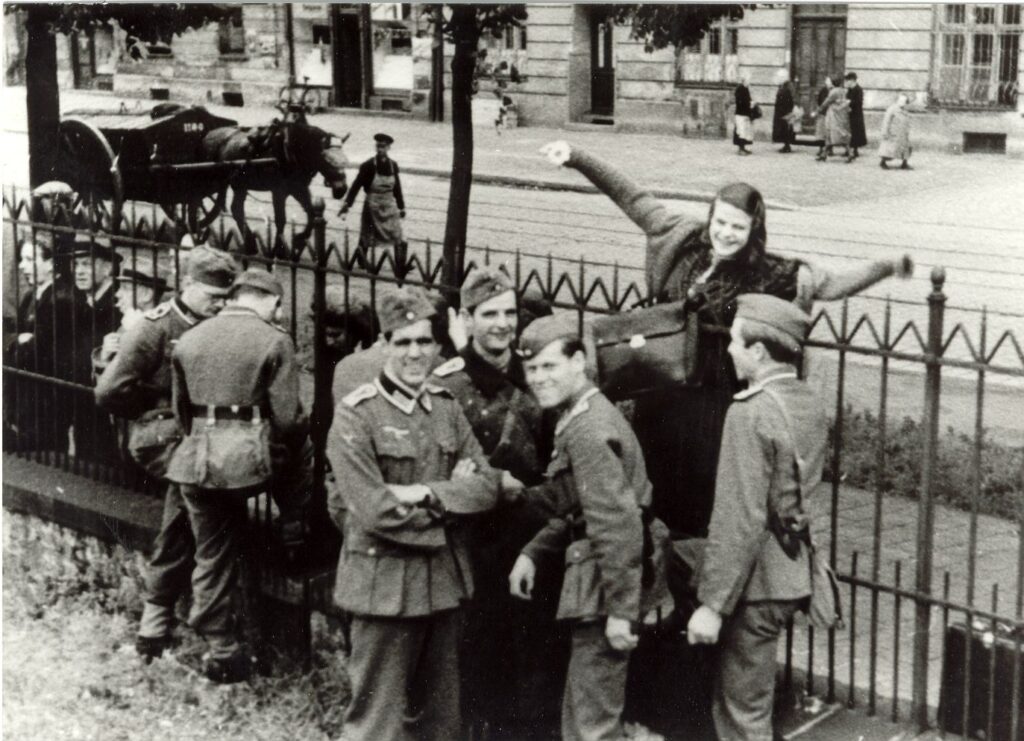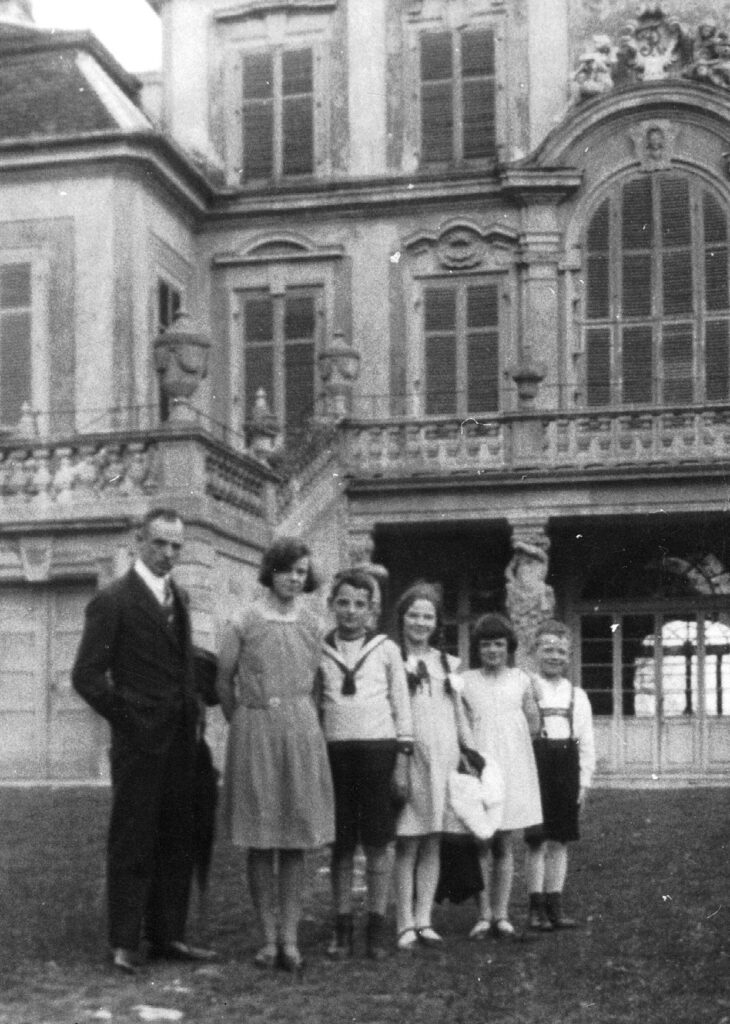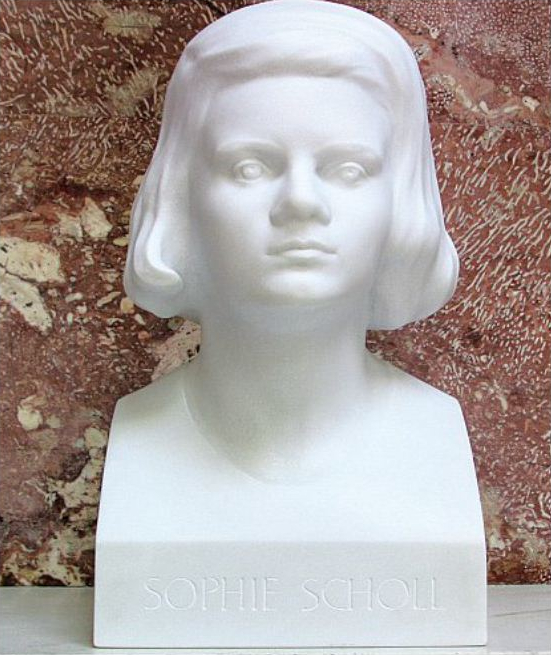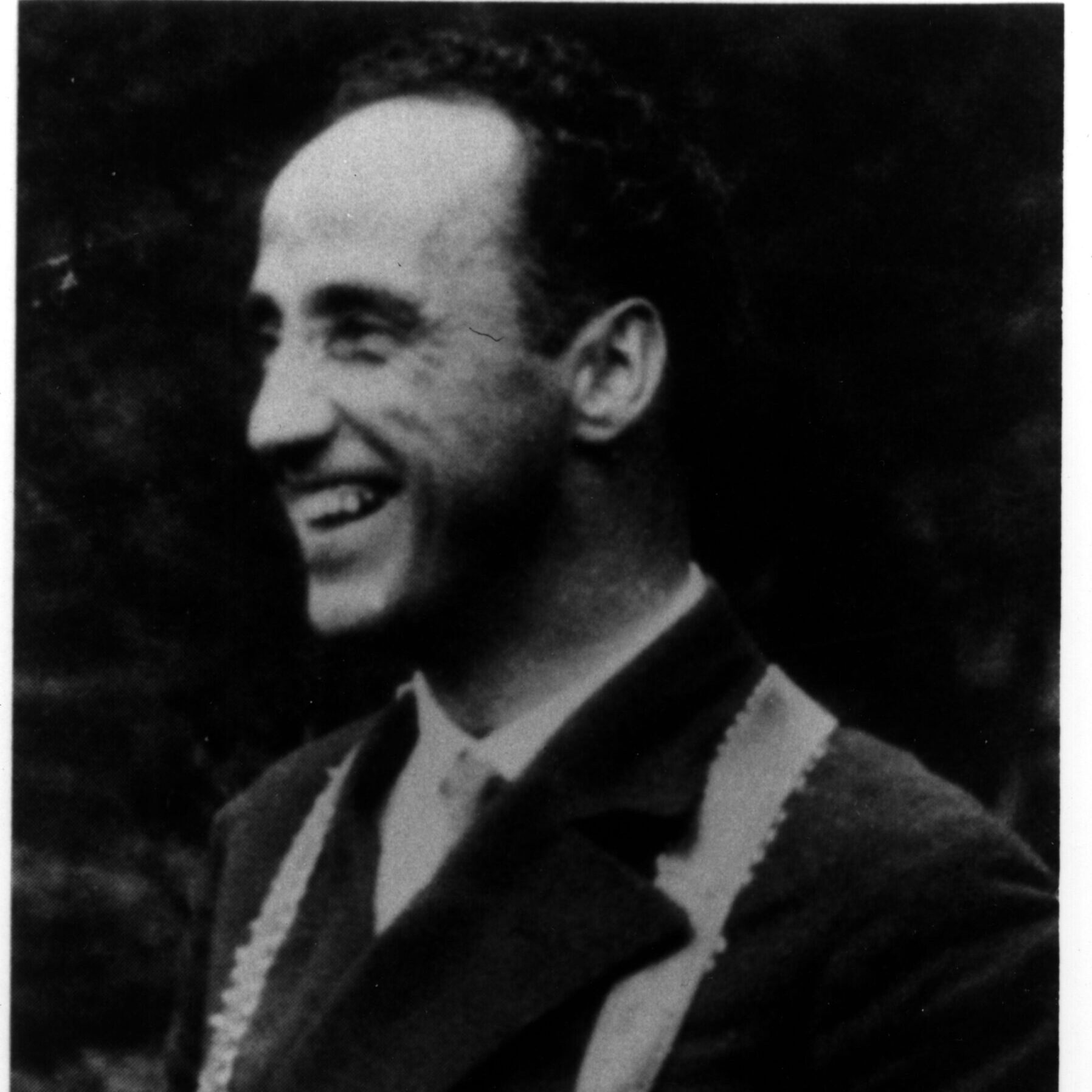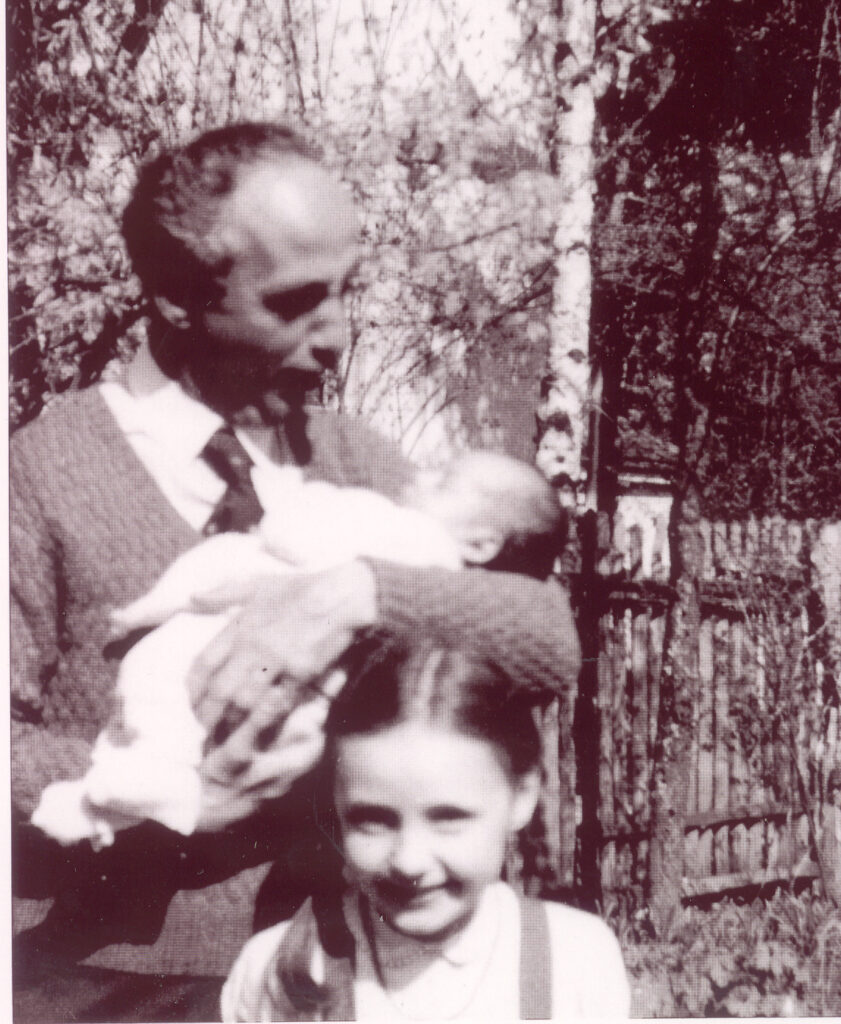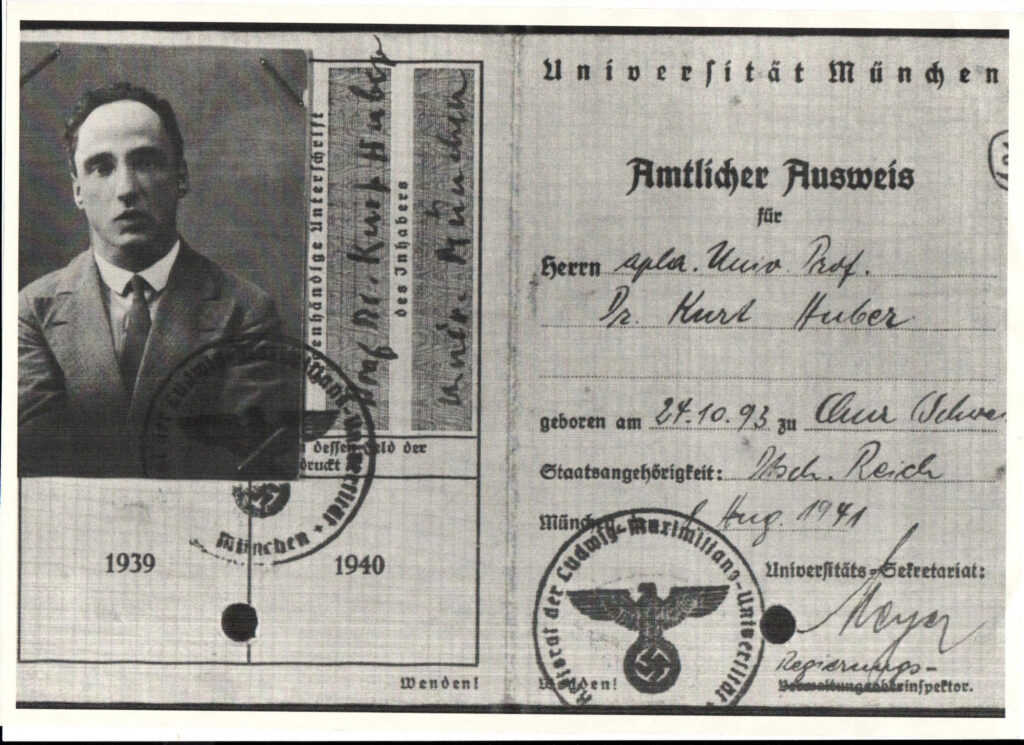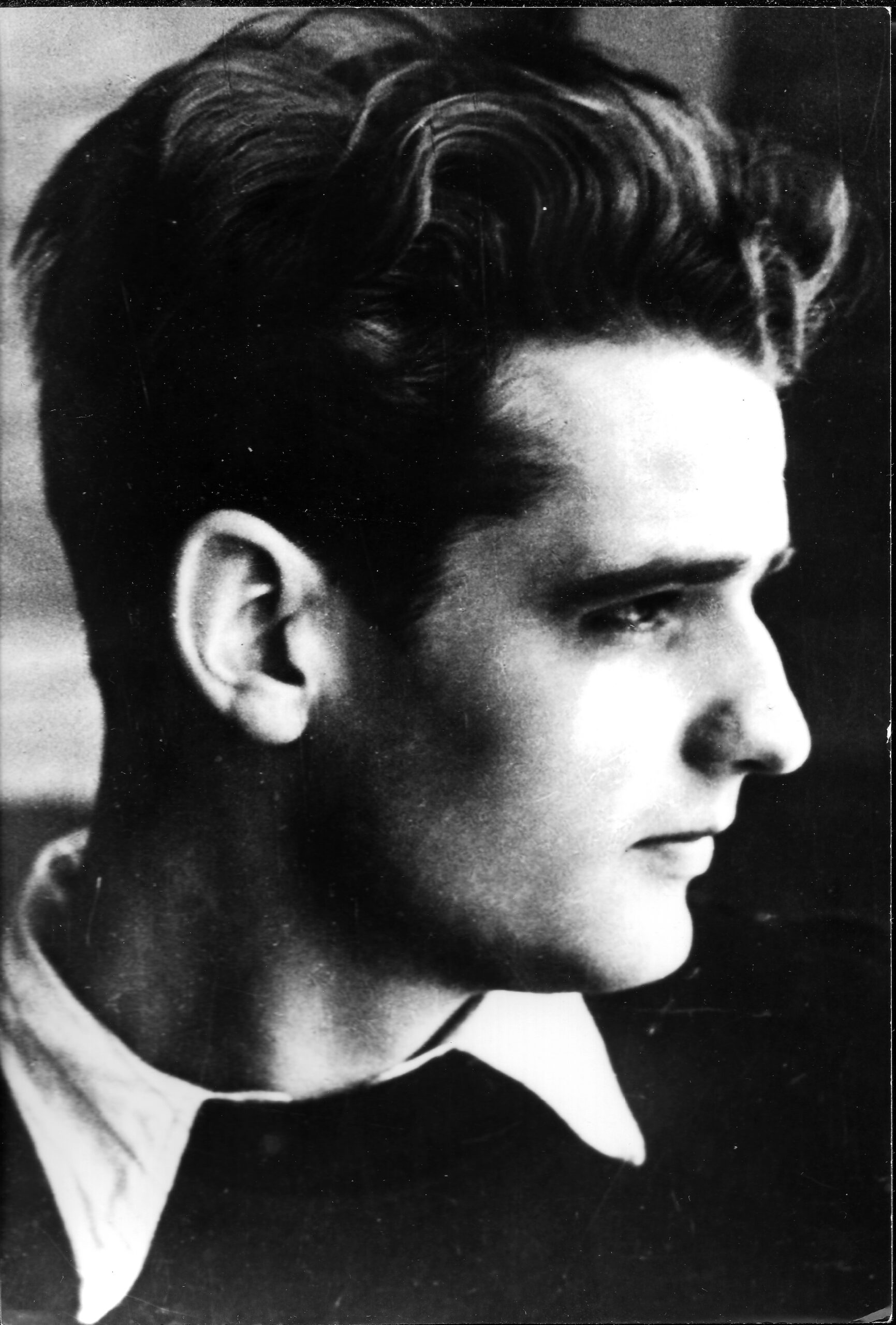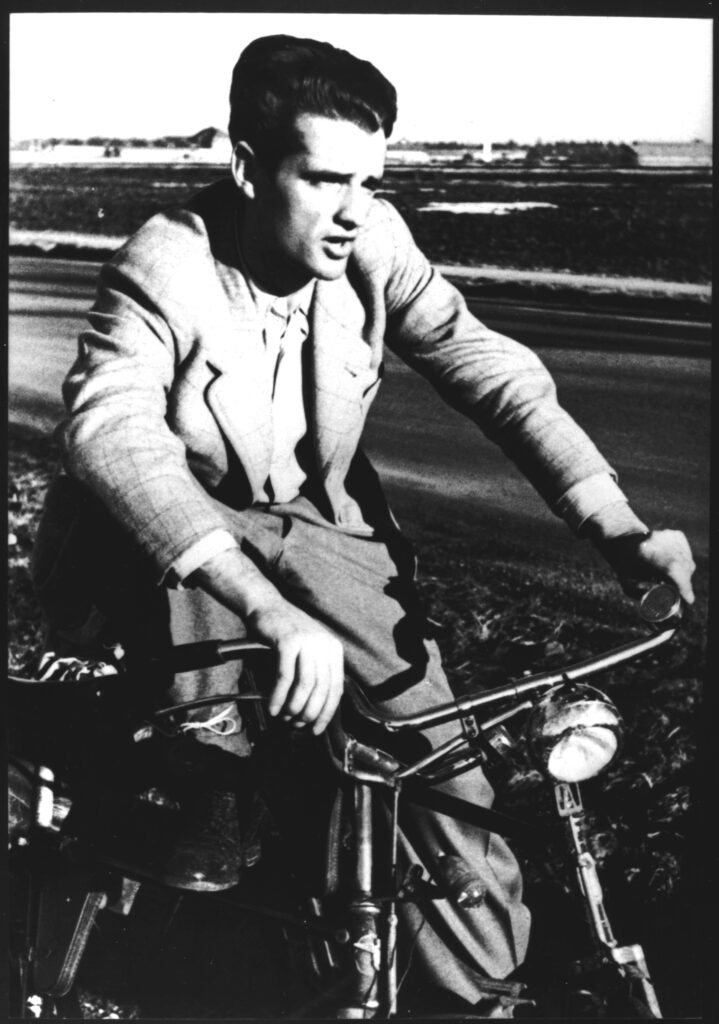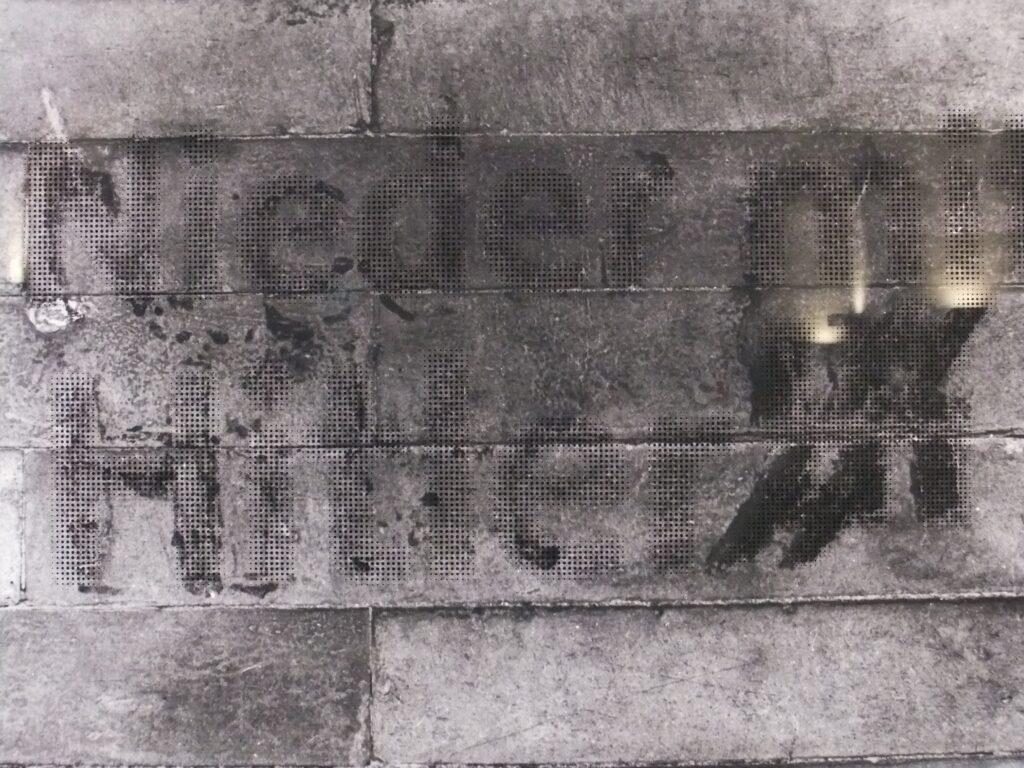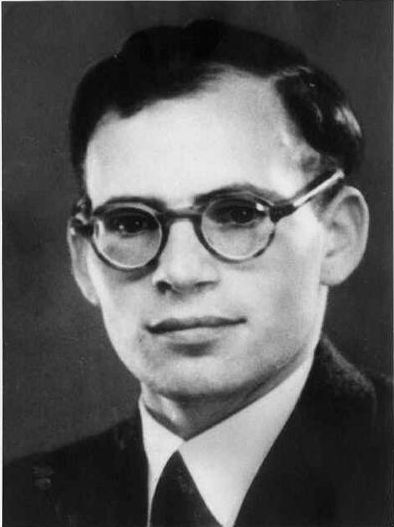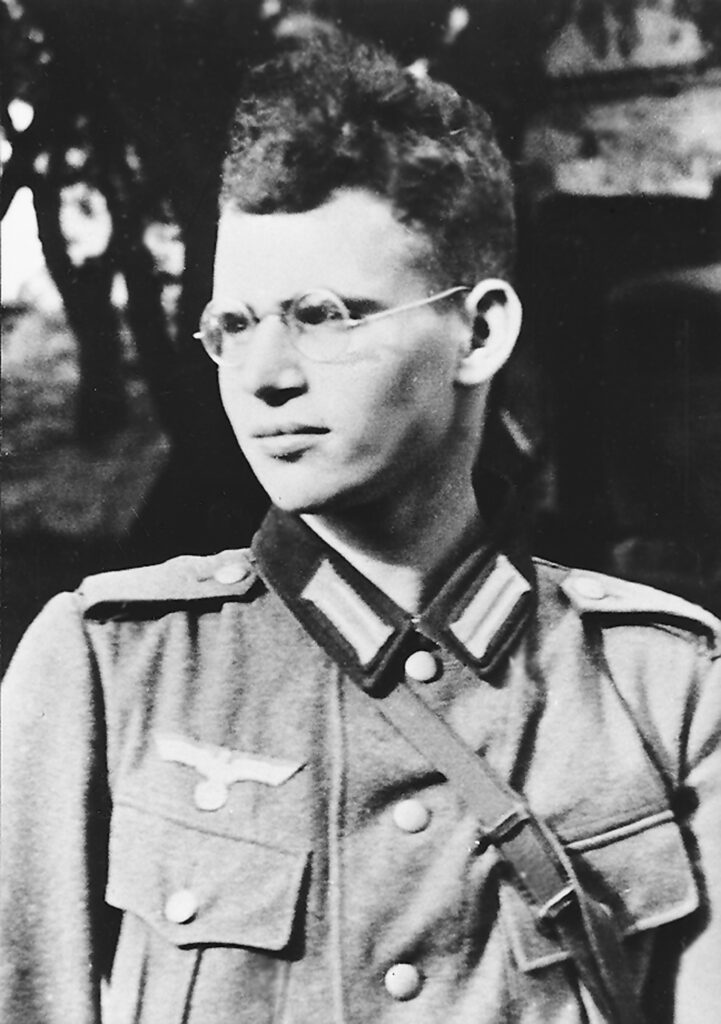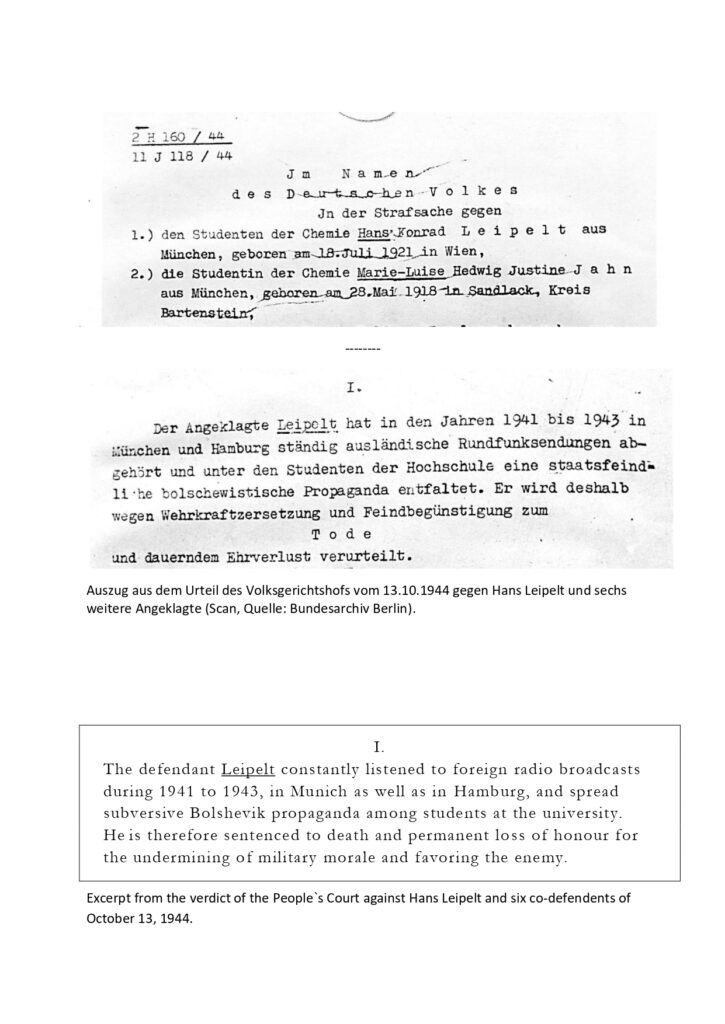Traute Lafrenz, an early opponent of the Nazi Regime, was a close friend of Hans Scholl and his family. She helped to print leaflets of the White Rose and brought them to Hamburg and Vienna. After the war, Traute moved to the United States where she passed away at the age of 103.
Traute Lafrenz was born in Hamburg on 3 May 1919. Her parents were politically national and conservative. After the Nazis came to power, Traute quickly developed a critical attitude towards the regime. Her open-minded teacher Erna Stahl in the Lichtwark Schule strongly influenced her.
In 1939 Traute began studying medicine at the University of Hamburg, where she met Alexander Schmorell. In summer 1941 she switched to the University of Munich. There she met Alexander Schmorell again and fell in love with his friend Hans Scholl. After their love affair, she remained closely associated with him and his family. Traute Lafrenz took part in reading evenings and political discussions of the circle of the White Rose.
When she received a leaflet in summer 1942, she recognized Hans Scholl as the author. She began to support the resistance activities. In November 1942 she brought two different White Rose leaflets to her former classmate Heinz Kucharski in Hamburg and later sent him another. Kucharski copied them and passed them on. At Christmas 1942, Lafrenz took a leaflet to relatives in Vienna and tried to organize a hectograph. Together with Sophie Scholl, she procured envelopes and stamps in January 1943.
On 20 February 1943, Traute Lafrenz travelled to Ulm and informed the parents of Hans and Sophie Scholl about the arrests of their children. She was also courageous enough to accompany the Scholl family to the funeral in Munich on 24 February. On 5 March, she herself was interrogated by the Gestapo for the first time, later arrested and sentenced to 12 month in prison by the Volksgerichtshof (peoples court).
In the course of the investigation against the “Hamburg branch of the White Rose”, the Gestapo arrested her again on 14 March 1944 and took her to the Gestapo prison in Hamburg-Fuhlsbüttel. Towards the end of the war, she and other women were transferred to prisons in Cottbus, Leipzig and finally Bayreuth, where she was liberated by US forces on 14 April 1945.
In 1947 Traute Lafrenz was invited by a Jewish friend to San Francisco. Here she met her future husband Veron Page in 1948. She finished her studies in the USA and stayed there. For 23 years she ran a school for disadvantaged children in Chicago. Since 1995 Traute Lafrenz-Page lived in South Carolina.
